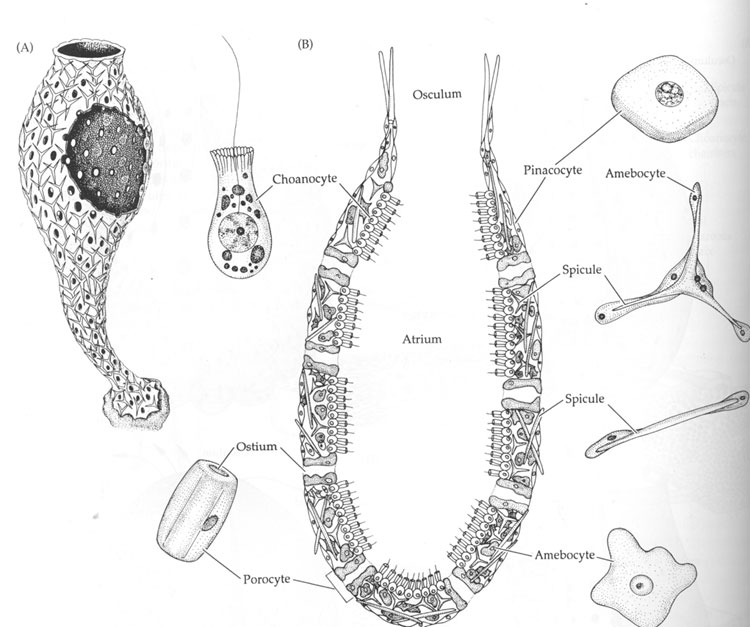


The osculum is surrounded by an upstanding collar of long monaxon spicules known as the oscular fringe, which resembles a crown, hence the name crown sponge. The sycon is a light brown or grey colour sponge with each cylinder's distal or free end has a single wide opening called the osculum or exhalent or excurrent pore. It is made up of several cylinders that are connected at the base and attached to some submerged solid object in the sea by a sticky secretion. Scypha is a vase-shaped plant with a length of 2.5 to 7.5 cm. Scypha species grow only about just 2 to 3 cm (approximately 1 inch) long in their lifetime. Scypha is widespread and abundant near the coasts of the North Atlantic. It's a branching colonial sponge, but there are also solitary individuals. It can be found in shallow water up to 50 fathoms (1 fathom = 6 feet), where waves provide plenty of food and well-oxygenated water. Scypha, also known as crown sponge, is a small marine sponge that attaches itself to submerged solid objects such as rocks, mollusc shells, and corals with a sticky secretion. Let us delve deeper into this Calcarea class species and learn more about the habitat, features and its mechanism. The organisation of such sponges differs greatly due to different degrees of folding in the body wall. Scypha or sycon as formerly known is a more complex type than Leucosolenia since Leucosolenia is a primitive asconoid type with no folding in its body wall, while Scypha's body wall is folded and therefore its spongocoel is comparatively smaller. At the tip, the water exits through an oscule, or wider opening. Each "finger," known as a radial canal, in syconoid sponges is perforated by many tiny pores through which water passes into a single central cavity. Scypha, also known as sycon, is a genus of marine sponges belonging to the class Calcarea hence referred to as calcareous sponges that are distinguished by the syconoid form of structure, which has a fingerlike body shape.


 0 kommentar(er)
0 kommentar(er)
